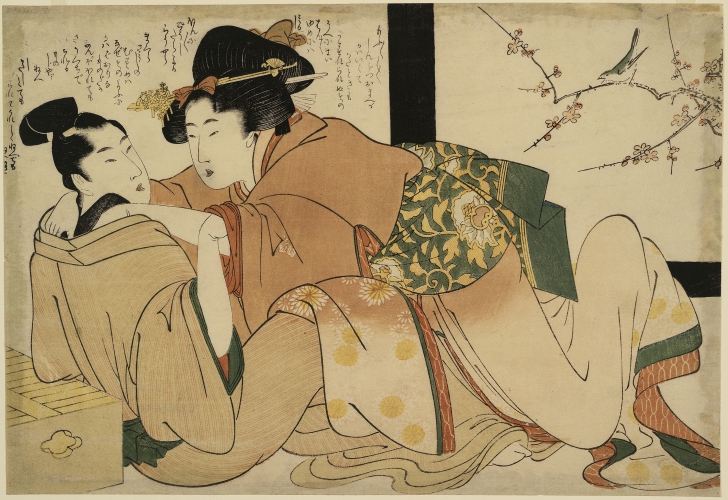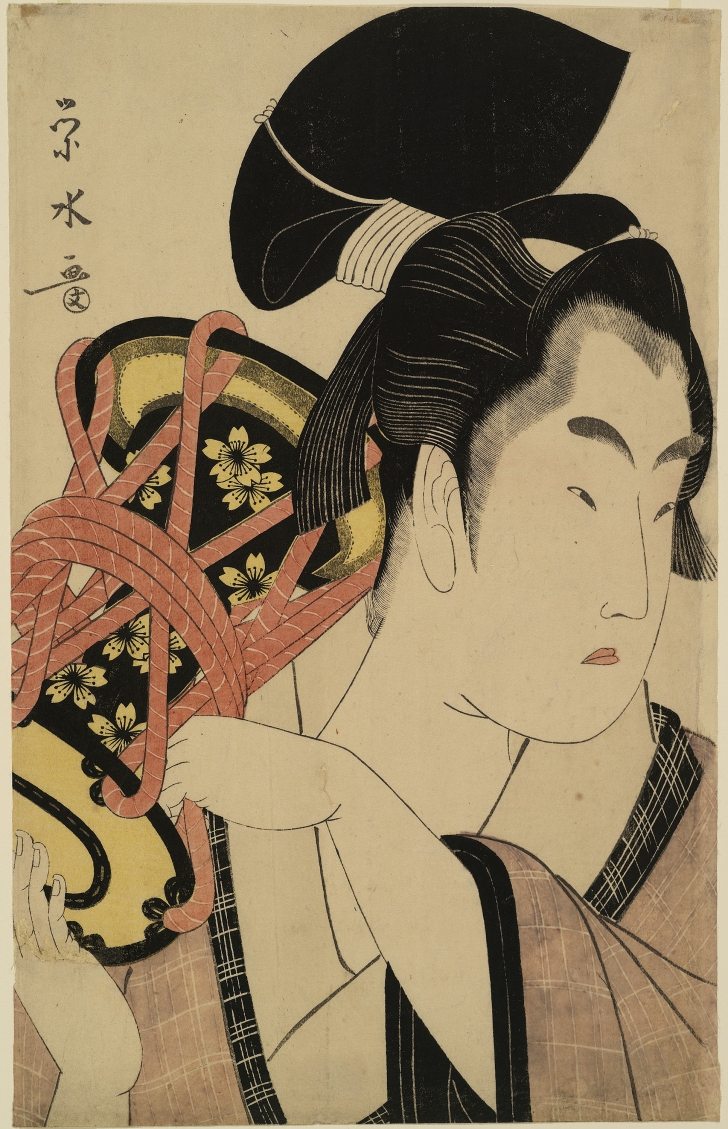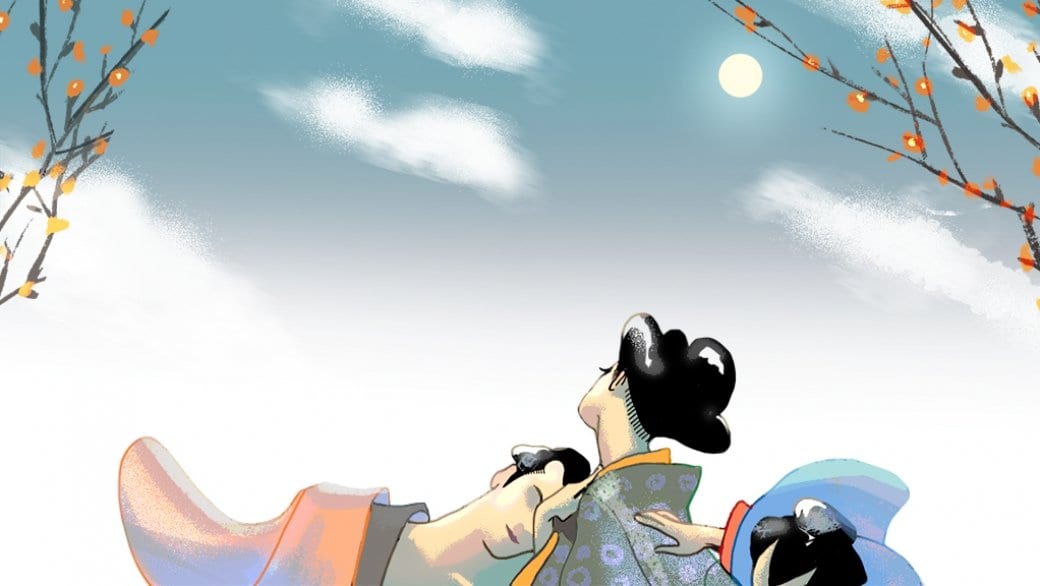There’s something seductive about fingering through ancient documents. The heady smell of old paper, running my eyes over rows upon rows of artifacts, the tactile joy of teasing history out with my fingertips. I don’t call myself a sapiosexual for nothing, so I was absolutely titillated when I was led into the Royal Ontario Museum’s Special Collections by Asato Ikeda to see some erotic Japanese woodblock prints.
In the 17th century, as the Tokugawa shogunate consolidated power in the city of Edo — what is now modern-day Tokyo — a new world was growing in Japan. The “floating world,” or ukiyo, was as much a social movement and an economic trend as it was a physical space. The tastes of a growing urban merchant class found decadent, commercial outlets in a world of art, theatre, literature and prostitution — usually some combination thereof.

Ukiyo-e, or “pictures of a floating world,” was a genre of woodblock prints that developed throughout the Edo period. While it first began as simple, monochromatic images, ukiyo-e masters developed elaborate ways of mass-producing gorgeous, full-colour images — first by hand, then by using multiple woodblocks that printed different areas of colour for one image. The images they created of the floating world were as diverse and, often, as sexually charged as life was among kabuki actors and prostitutes. Some scholars say that one out of every five images created by most of the masters were erotic prints, called shunga — “spring pictures.”
The sexual configurations of shunga subjects followed the period’s delightfully perverse, bisexual tastes: boys being seduced by older patrons, either men or women; mistresses boinking crossdressed men while being spied on by their male lovers; women dressing up as adolescent boys for sexual titillation. Eroticism, however, did not equate to pornography.
“I think this art versus pornography is a really Western binary,” says Ikeda, an assistant professor of art history at Fordham University. “The reason why I think it’s part of this Edo visual culture is that many major artists did produce erotic prints. It was really part of that culture and, aesthetically speaking, they’re very well done. It’s not just pornography for disposable purposes, but also very beautiful, and also very expensive. I think we can call it art as well.”
Ikeda is the curator for A Third Gender: Beautiful Youths in Japanese Prints, a 2016 exhibit at the Royal Ontario Museum. She developed the exhibit as part of a two-year postdoctoral fellowship at the ROM, working with Joshua Mostow, a University of British Columbia professor of Asian studies.
A Third Gender focuses on a particular fascination in ukiyo-e prints, the wakashu, a term that indicates young boys and men with erotic connotations. “Wakashu is a stage of life that you have to go through if you’re a man,” Ikeda says. “I conceptualize wakashu being late teens and early 20s. That’s before you go through a coming of age ceremony at which point you will become an adult.” The exhibit will be divided into four sections: one about wakashu and the Edo period, the second about wakashu and men, the third on wakashu and women, and the fourth on crossdressing women and contemporary issues.

Ikeda points to the exhibit’s primary promotional image used for A Third Gender as a perfect depiction of a wakashu. The image shows a round-faced, scowling young man holding a drum, his hair styled with forelocks and sidelocks. But he also has the signature shaved pate of the wakashu, which communicates that he hasn’t yet taken on adult signifiers after a coming of age ceremony.
Sexual roles in Japan were typically regimented and hierarchical — men were the “active” partners, while women, younger partners, crossdressers and prostitutes are passive. Penetrators versus the penetrated. However, some ukiyo-e show that there was often flexibility. Ikeda points to one of the ROM’s prints that depicts an adult woman clambering over a wakashu, murmuring “you’re so cute,” and other sweet nothings; she is clearly the active, desiring partner.
While A Third Gender focuses more on wakashu, the exhibit will also explore other aspects of sex and gender found in ukiyo-e. The final image that will be appearing in the exhibit depicts two women: one laying down, the other mounting her with an enormous phallus. An Edo period strap-on.
“One interpretation is that women were not supposed to be involved with each other romantically or erotically or sexually, so this was meant to be a parody picture to be laughed at,” Ikeda explains. “[Other scholars] say that people who didn’t have access to penis, for example nuns or ladies-in-waiting, they were actually encouraged to masturbate. Those people would say this is a woman masturbating with her assistant.
“We talk so much about male same-sex relations, I think it’s fair to at least mention the possibility or existence of these images and female same-sex relations,” she says. “This is a question that needs to be explored more scholarly, but it’s kind of left open at the end [of the exhibit].”
A Third Gender: Beautiful Youths in Japanese Prints
Saturday, May 7–Sunday, Nov 27, 2016
Royal Ontario Museum, 100 Queen’s Park, Toronto
rom.on.ca
History Boys appears on Daily Xtra on the first and third Tuesday of every month. You can also follow them on Facebook.
(Images courtesy of ROM)


 Why you can trust Xtra
Why you can trust Xtra


